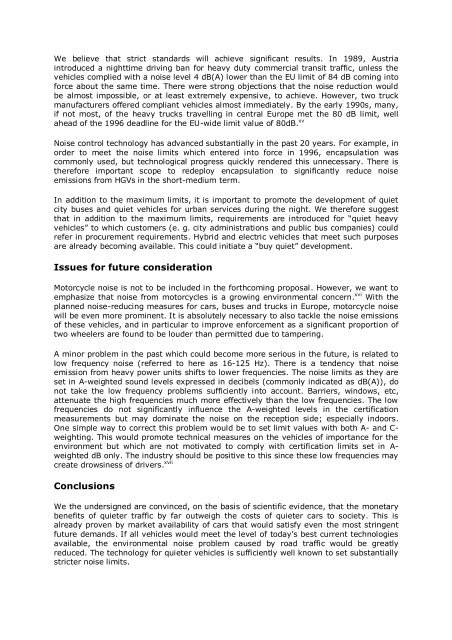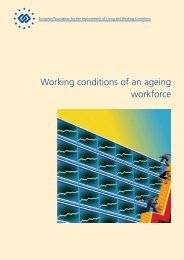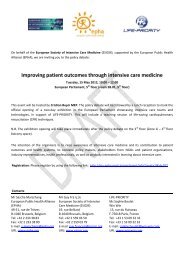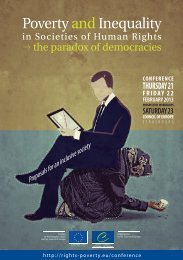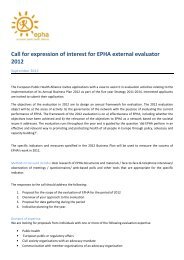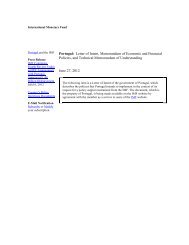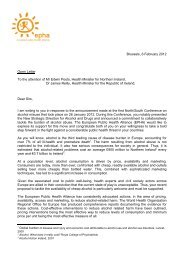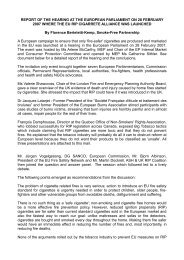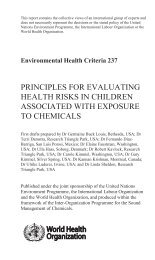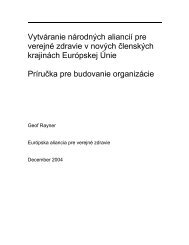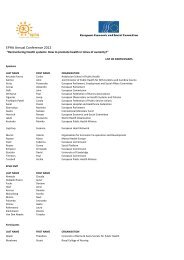You also want an ePaper? Increase the reach of your titles
YUMPU automatically turns print PDFs into web optimized ePapers that Google loves.
We believe that strict standards will achieve significant results. In 1989, Austriaintroduced a nighttime driving ban for heavy duty commercial transit traffic, unless thevehicles complied with a noise level 4 dB(A) lower than the EU limit of 84 dB coming intoforce about the same time. There were strong objections that the noise reduction wouldbe almost impossible, or at least extremely expensive, to achieve. However, two truckmanufacturers offered compliant vehicles almost immediately. By the early 1990s, many,if not most, of the heavy trucks travelling in central Europe met the 80 dB limit, wellahead of the 1996 deadline for the EU-wide limit value of 80dB. xvNoise control technology has advanced substantially in the past 20 years. For example, inorder to meet the noise limits which entered into force in 1996, encapsulation wascommonly used, but technological progress quickly rendered this unnecessary. There istherefore important scope to redeploy encapsulation to significantly reduce noiseemissions from HGVs in the short-medium term.In addition to the maximum limits, it is important to promote the development of quietcity buses and quiet vehicles for urban services during the night. We therefore suggestthat in addition to the maximum limits, requirements are introduced for “quiet heavyvehicles” to which customers (e. g. city administrations and public bus companies) couldrefer in procurement requirements. Hybrid and electric vehicles that meet such purposesare already becoming available. This could initiate a “buy quiet” development.Issues for future considerationMotorcycle noise is not to be included in the forthcoming proposal. However, we want toemphasize that noise from motorcycles is a growing environmental concern. xvi With theplanned noise-reducing measures for cars, buses and trucks in Europe, motorcycle noisewill be even more prominent. It is absolutely necessary to also tackle the noise emissionsof these vehicles, and in particular to improve enforcement as a significant proportion oftwo wheelers are found to be louder than permitted due to tampering.A minor problem in the past which could become more serious in the future, is related tolow frequency noise (referred to here as 16-125 Hz). There is a tendency that noiseemission from heavy power units shifts to lower frequencies. The noise limits as they areset in A-weighted sound levels expressed in decibels (commonly indicated as dB(A)), donot take the low frequency problems sufficiently into account. Barriers, windows, etc,attenuate the high frequencies much more effectively than the low frequencies. The lowfrequencies do not significantly influence the A-weighted levels in the certificationmeasurements but may dominate the noise on the reception side; especially indoors.One simple way to correct this problem would be to set limit values with both A- and C-weighting. This would promote technical measures on the vehicles of importance for theenvironment but which are not motivated to comply with certification limits set in A-weighted dB only. The industry should be positive to this since these low frequencies maycreate drowsiness of drivers. xviiConclusionsWe the undersigned are convinced, on the basis of scientific evidence, that the monetarybenefits of quieter traffic by far outweigh the costs of quieter cars to society. This isalready proven by market availability of cars that would satisfy even the most stringentfuture demands. If all vehicles would meet the level of today’s best current technologiesavailable, the environmental noise problem caused by road traffic would be greatlyreduced. The technology for quieter vehicles is sufficiently well known to set substantiallystricter noise limits.


